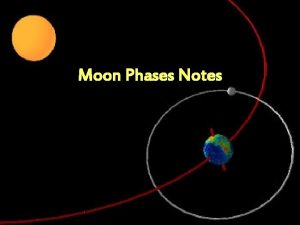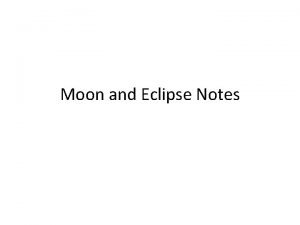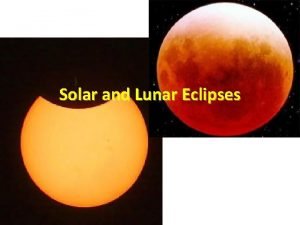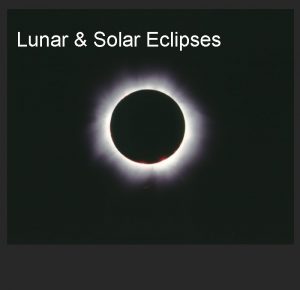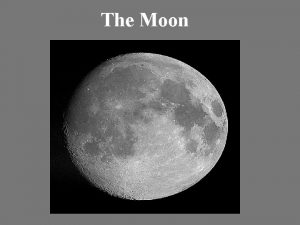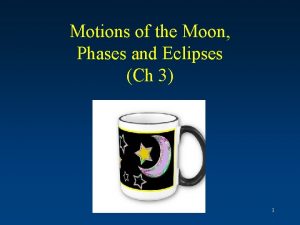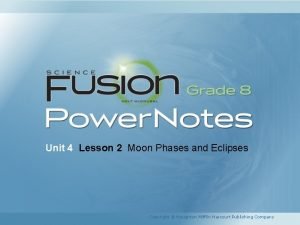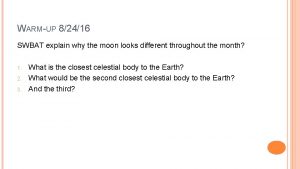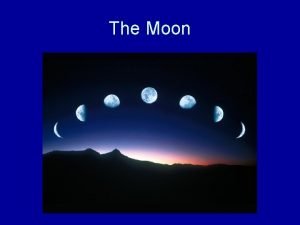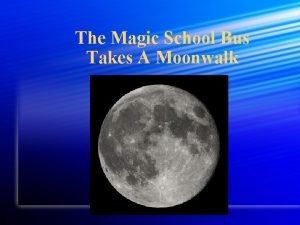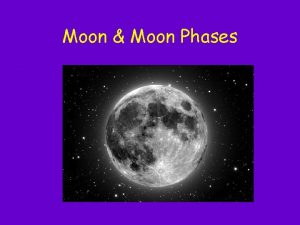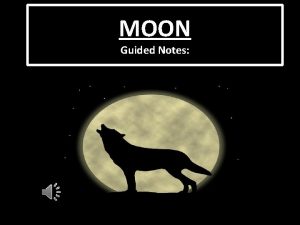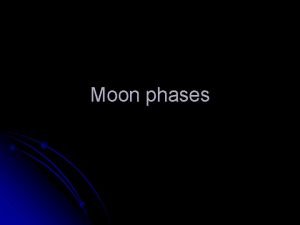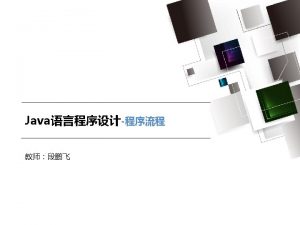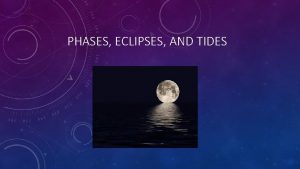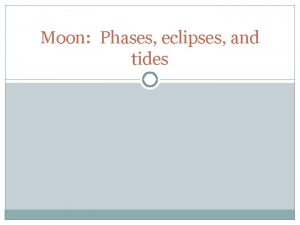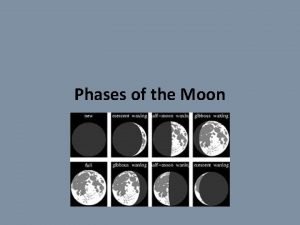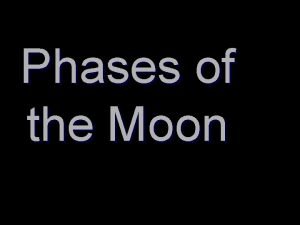Moon and Eclipse Notes Phases The different shapes










- Slides: 10

Moon and Eclipse Notes

• Phases – The different shapes of the moon you see from Earth. The phase you see depends on how much of the sunlit side of the moon faces Earth.

• Why do we have “phases of the moon”? – The moon orbits around the Earth – The reflected light changes shape – Because of its position in relation to the Sun and Earth • So…. . Crescent = lighted part Waning = decreasing Waxing = increasing Gibbous = bulging

Draw and Label

• Rotation – The spinning of a planet on its axis. Earth has a complete rotation in 24 hours – this causes day and night. • Revolution – The movement of an object around another. One complete revolution of Earth around the Sun is called a year. • Orbit – The path of an object as it revolves around another object in space. Earth’s orbit is not quite circular – it is slightly elongated/ellipse.

• Solar Eclipse occurs when the Moon is directly between the Earth and the Sun. • Solar eclipses of any kind can only take place at New Moon. • A total eclipse is visible from the darkest part of the Moon’s shadow – the umbra. From the penumbra a partial eclipse is seen.

SOLAR ECLIPSE-New Moon NEW MOON SUN UMBRA EARTH PENUMBRA

• Lunar Eclipse occurs when the Moon moves into the shadow of the Earth. • The Moon darkens as it enters the shadow and generally appears a reddish-orange color. This color results from the refraction of sunlight by the Earth’s atmosphere. It changes if there are unusually large amounts of dust in the air, e. g. a volcanic eruption. • Lunar eclipses are much more common than total solar eclipses.

LUNAR ECLIPSE-Full Moon FULL MOON SUN EARTH UMBRA PENUMBRA

• Umbra – The area in which the shadow of an object (the Moon and Earth) is total. Cone shaped; the very darkest part of the moon’s shadow. • Penumbra – The area in which the shadow of an object (the Moon and Earth) is partial. The larger part of the moon’s shadow.
 Phases of the moon notes
Phases of the moon notes Umbra dan penumbra
Umbra dan penumbra Differentiate between lunar eclipse and solar eclipse
Differentiate between lunar eclipse and solar eclipse Draw the shadow of earth on the moon during a lunar eclipse
Draw the shadow of earth on the moon during a lunar eclipse Whats a natural satellite
Whats a natural satellite Moon phases and eclipses
Moon phases and eclipses Lesson 2 moon phases and eclipses answer key
Lesson 2 moon phases and eclipses answer key New moon facts
New moon facts Moon phases when the sun is on the left
Moon phases when the sun is on the left What causes the phases of the moon
What causes the phases of the moon Magic school bus moon phases
Magic school bus moon phases
